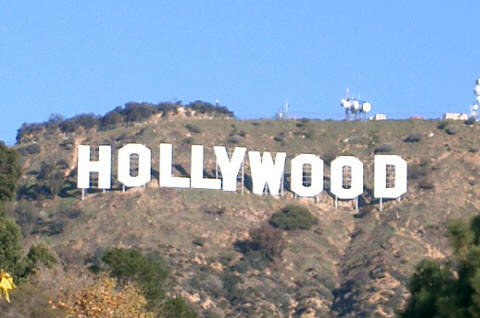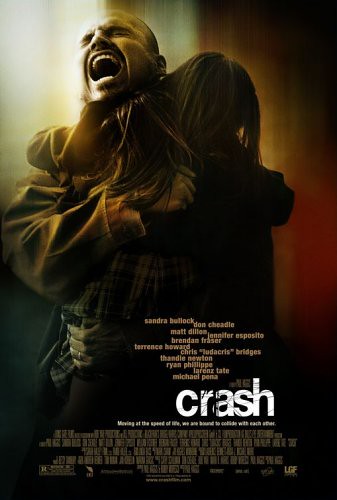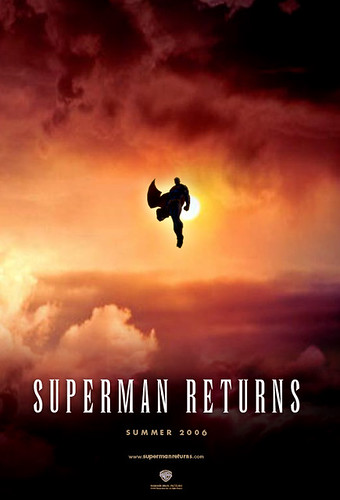Man in a Hole: Who Throws the Rope?
CRACKING THE SECRET OF MOVIES AND NARRATIVE
There’s something that makes me laugh harder than watching Will Ferrell and Jon Heder ice skate, a ridiculous line that I hope isn’t spoken while I’m drinking, lest the tasty beverage finds its way out my nostrils. The hilarious comment is often spoken by jaded movie critics or entertainment-saturated audiences:
“Hollywood is out of ideas”.

That probably didn’t make you guffaw, but truth be told it’s one of the funniest lines ever spoken. Let’s get one thing straight; Hollywood never had any ideas. One need look no further than some of the earliest films, with a vamping Bela Lugosi and Clark Gable being frank with Scarlett. Hollywood began by pillaging classic literature, and just because they’re now pillaging “classic” comic books from the 60s and 70s doesn’t somehow indicate a sudden lack of originality. An even closer look at many “original” screenplays can usually reveal an amalgamation of concepts from several stories, reconstituted and repainted with a fresh coat in the form of locale or period.
It’s not strange that Hollywood has become a narrative cannibal. In it’s first half-century, it adapted or borrowed from other storytelling forms; now, there is so much television and film in the can it’s literally impossible not to borrow, so it’s actually more honest when they admit it’s a remake. It’s a sad truth that watching the Bogart classic Casablanca and Pamela Anderson “classic” Barb Wire back-to-back will reveal they are virtually the same narrative – just add breast implants and subtract acting ability. Certainly the quality of a movie can be questioned, but damning Hollywood for recycling seems harsh, considering the same accusation is easily leveled at William Shakespeare. How many times do the same plot points and themes pop up in his various comedies and tragedies?
Methinks we doth protest too much.
In fact, scripture itself testifies to this apparent redundancy not only as it impacts our storytelling, but life itself:
All things are full of weariness; a man cannot utter it; the eye is not satisfied with seeing, nor the ear filled with hearing. What has been is what will be, and what has been done is what will be done, and there is nothing new under the sun. Is there a thing of which it is said, “See, this is new”? It has been already in the ages before us. There is no remembrance of former things, nor will there be any remembrance of later things yet to be among those who come after. – Ecclesiastes 1
Truer words are rarely spoken. Most classes on literature tackle this concept as it applies to storytelling at some point. While there are many opinions on how many plots there are, it’s generally accepted that there are a finite number of issues dealt with in the human experience that worm their way into our stories. I’ve seen the basic Literature 101 breakdown of seven plots, and a more robust and complex matrix of sixty-five narrative themes.
So. how many plots ARE there? The late Kurt Vonnegut, perhaps reacting sarcastically to this reductionist mindset, said grumpily that there was only ONE plot, which he dubbed “man in a hole”. Man falls into a hole; man struggles to get out of the hole. In other words, conflict, and the search (successful or not) for resolution, becomes the pivotal structure for all stories. Vonnegut deserves some credit here, as I think he’s pretty close to the mark. In my experience, most stories fall into one of two major categories, simply with different window dressing:
-
LIFE UNDER THE SUN
-
LIFE BEYOND THE SUN
Movies like Citizen Kane, American Beauty, Crash, Blade Runner and Syriana depict how cyclical and lamentable and hopeless life seems. There is no escape, no ascent, and no transcendence. At best, there are moments of temporary respite or distraction. We face the daily grind, accumulating pain, regret, and eventually death. In many ways, they continue the lament of King Solomon in Ecclesiastes:
 “Vanity of vanities, says the Preacher, vanity of vanities! All is vanity. What does man gain by all the toil at which he toils under the sun? A generation goes, and a generation comes, but the earth remains forever.” “I applied my heart to seek and to search out by wisdom all that is done under heaven. It is an unhappy business that God has given to the children of man to be busy with. I have seen everything that is done under the sun, and behold, all is vanity and a striving after wind.
“Vanity of vanities, says the Preacher, vanity of vanities! All is vanity. What does man gain by all the toil at which he toils under the sun? A generation goes, and a generation comes, but the earth remains forever.” “I applied my heart to seek and to search out by wisdom all that is done under heaven. It is an unhappy business that God has given to the children of man to be busy with. I have seen everything that is done under the sun, and behold, all is vanity and a striving after wind.
What is crooked cannot be made straight, and what is lacking cannot be counted. I said in my heart, “I have acquired great wisdom, surpassing all who were over Jerusalem before me, and my heart has had great experience of wisdom and knowledge.” And I applied my heart to know wisdom and to know madness and folly. I perceived that this also is but a striving after wind. For in much wisdom is much vexation, and he who increases knowledge increases sorrow.” – Ecclesiastes 1
These films, capturing the tension, the pain, the struggle and seeming futility of existence, embrace the lament of Life Under the Sun.
Alternately, heroic films like Batman Begins, The Matrix, Lord of the Rings, The Last of the Mohicans, etc. that depict a protagonist, hero, champion, savior someone inspiring who rises up, challenges the story’s antagonist(s) and sacrifices himself for others (or at least demonstrates the willingness to do so). These films often employ science fiction or magic as a device, or simply someone with more skill or luck than any person should reasonably have, overcoming the travails of this life and giving hope to the hopeless… sometimes to the other characters in the story, and – if done well – to the viewer as well. It is often reminiscent the singular hero in the Bible, Jesus:
“Then I saw heaven opened, and behold, a white horse! The one sitting on it is called Faithful and True, and in righteousness he judges and makes war. His eyes are like a flame of fire, and on his head are many diadems, and he has a name written that no one knows but himself. He is clothed in a robe dipped in blood, and the name by which he is called is The Word of God. And the armies of heaven, arrayed in fine linen, white and pure, were following him on white horses. From his mouth comes a sharp sword with which to strike down the nations, and he will rule them with a rod of iron. He will tread the winepress of the fury of the wrath of God the Almighty. On his robe and on his thigh he has a name written, King of kings and Lord of lords.” – Revelation 9

Movies with a strong, transcending protagonist often capture this heroic champion who brings hope… a life of salvation from the malaise seen in the other stories which merely capture a snapshot of the world and our lives… a life with at least a glimmer of transcendance from misery and death, and our own depravity, much like that promised by the Savior of the Bible:
“He will wipe away every tear from their eyes, and death shall be no more, neither shall there be mourning nor crying nor pain anymore, for the former things have passed away.”
– Revelation 21
Even heroes in the narrative of the Bible foreshadow this heroic victory and ultimate hero. Moses, David and others dimly image Jesus as Savior of the world. In many ways, the Supermen and Lone Rangers in our fiction often capture images of Him, intentionally or not.
A man named Joseph Campbell once codified the hero’s journey he found throughout heroic literature, which he dubbed the monomyth. He made no claims that these originated with one true myth – as C.S. Lewis would have – but the question hangs in the air nevertheless; why the similarity in heroic structure? Is there one shared false delusion of hope – with cultural variations – that we share across geography and history, when in fact we’re destined to go the way of the dinosaurs and the dodo? Or… is there ultimately a true story of hope that the universe pivots upon? Distorted as they may be, (sometimes beyond recognition) is Jesus the inspiration for these stories throughout human history… which both precede and follow his incarnation? My unyielding belief is that this is so.
As a wikipedia entry points out, Cambell’s monomyth structure is often blamed for lack of originality and clichés in popular culture, especially big-budget Hollywood films. I would argue that the sheer glut of modern films, bad writing (George Lucas comes to mind) and excessive consumption by audiences are far better explanations for this dissatisfaction. This is why Life Under the Sun films have become more popular recently, simply because they offer something different, albeit cynical.
To be fair, determining which story falls in which category is not always so simple. For instance, look at Keifer Sutherland’s hit “24“. Season after season CTU is compromised, the government is revealed to be corrupt, inept, or both, and there is deceit and duplicity at every turn. Every few years this cycle of death and betrayal surfaces in the life of Jack Bauer. The question is, does Jack bring a Christ-like quotient to the story? He sacrifices himself for others, he claims to follow the spirit of his country (which sometimes means he opposes its ruling leaders), and he frequently staves off impending doom. However, he also tortures innocent parties to obtain information, (even shooting an innocent woman simply to get her traitorous husband to talk) and kills another man in cold blood (then cuts his head off with a hacksaw). Jack gets addicted to drugs, serves his country at the expense of his marriage and relationship with his daughter, and often responds out of furious revenge instead of righteous anger. One season ends with Bauer coming unglued in his car with tears and trembling. Is he ultimately the hero of the story, or another victim of Ecclesiastes’ meaningless misery? The jury is still out.
 Spider-man is another great example. Is Peter Parker a Christ-like figure, saving the city and swinging in to save his future bride, or is he a guilt-ridden boy obsessing with some of his responsibilities while abdicating others, trying hopelessly to atone for a defining mistake of pride and a sin of omission that led to his Uncle’s death? While some movies will be easily defined as Life Under the Sun or Life Beyond the Sun, many will be on a sliding scale somewhere between the two. In fact, some will incorporate strong elements of both and make the main thrust subjective; one viewer might see the hopelessness the film depicts, while the other sees a glimmer of solution reflected in one or more characters. This makes for great discussion.
Spider-man is another great example. Is Peter Parker a Christ-like figure, saving the city and swinging in to save his future bride, or is he a guilt-ridden boy obsessing with some of his responsibilities while abdicating others, trying hopelessly to atone for a defining mistake of pride and a sin of omission that led to his Uncle’s death? While some movies will be easily defined as Life Under the Sun or Life Beyond the Sun, many will be on a sliding scale somewhere between the two. In fact, some will incorporate strong elements of both and make the main thrust subjective; one viewer might see the hopelessness the film depicts, while the other sees a glimmer of solution reflected in one or more characters. This makes for great discussion.
The great and very useful nature of recognizing this distinction is that either one can be useful. As a pastor, either of these stories work most effectively. Life Under the Sun typifies the hopelessness of the human condition, and leaves one lacking satisfaction. Life Beyond the Sun mimics, or gropes at, a distorted view of the world’s real savior in Jesus Christ. One depicts our hopelessness without a savior, the other grapples with that hope and portrait of our redeemer.
At the end of the day, every story boils down to that dastardly villain with the waxed mustache, the bound damsel on the train tracks, and the steam whistle death-knell of the mortality train. The only narrative variation is whether or not there is a hero riding to the rescue on his white horse, and what he looks like.



Alaysis: Life under the sun = pessimistic naievity (glass half empty). Life beyond the sun = optimistic integrity (glass half full). And you are right James, most, if not all, stories toe the line between these two except one…which is why it is called the greatest story ever told, and why I believe so much in our savior, because he is unwavering and perfect in every way!
Thank you for creating this blog. Thank you for saying what you say. As a life-long film lover and filmmaker and above all born again Believer in Christ this is music to my ears. God bless! I am sharing this with everyone I can! 🙂